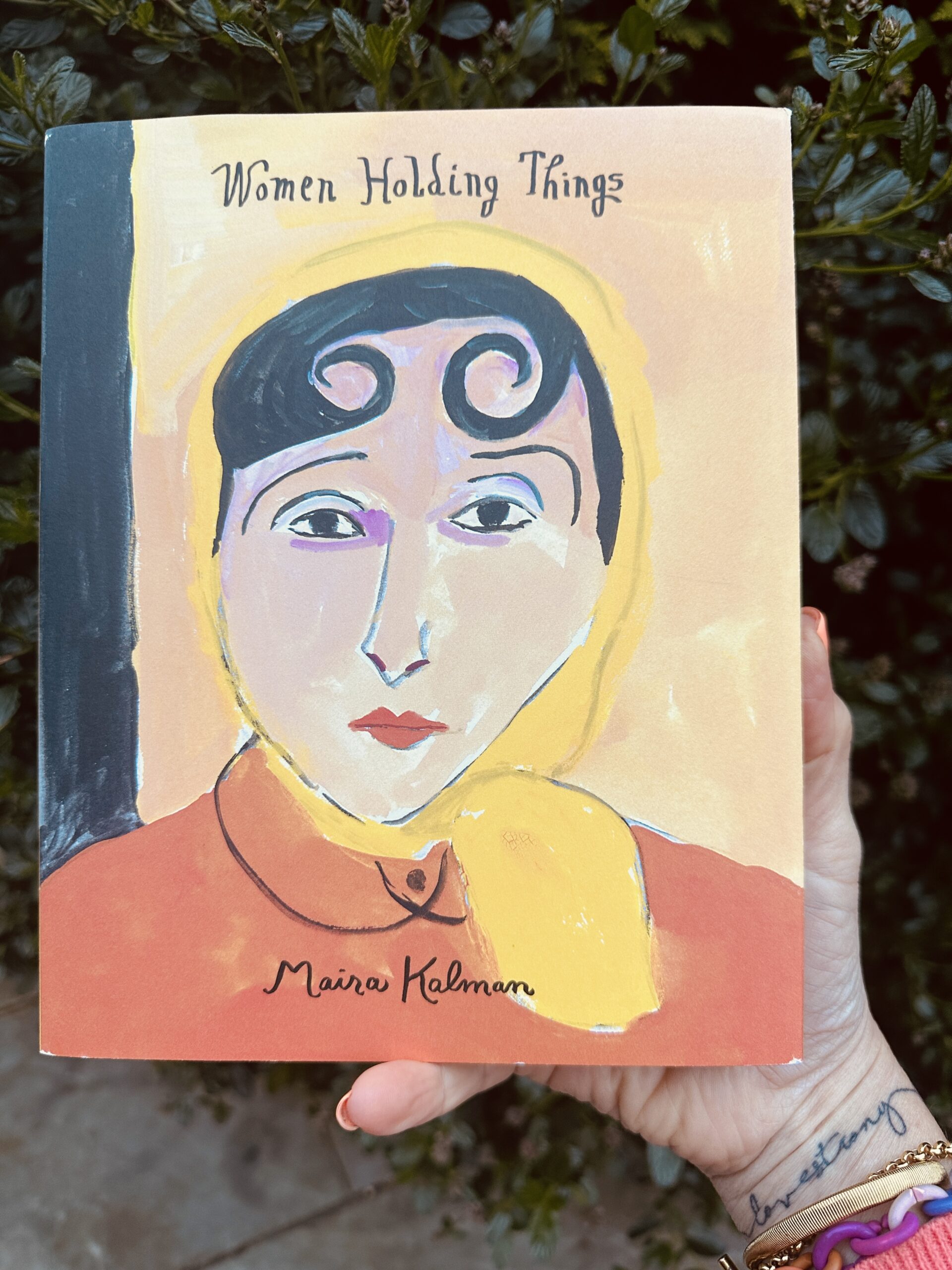This whimsical, yet emotionally weighty, book is my favourite of Maira Kalman’s, for her ability to make me think about and celebrate the myriad of women’s lives, The mundane and (not always) literal act of ‘holding’ is used as a metaphor for all that women carry. Or all that we hold on to.
Emotional labour, physical burdens, societal pressures are all things women carry, invisible loads I know all too well, along with all other women I know and those I do not know. Maira depicts the beauty of women holding books, honey and flowers alongside the beautiful strength of women holding court, holding strong and the resolve of a woman ’holding her own’.
Maira’s feminist messaging is subtle yet powerful, shown through intimate and relatable, sometimes humorous, sometimes heartbreaking scenes. The contradiction of all that women carry and hold (care work, resilience, expectation) within a world that often takes it all for granted.
And so I ask? What are you currently holding on to? What are you carrying?
Maira Kalman is a celebrated American author, artist and illustrator, who is best known for her illustrations, insightful commentary and thought-provoking story-telling style. She has published books and artworks about small everyday moments and big existential questions such as the nature of democracy, and feminism.
As I turn the pages, my thoughts naturally turn to myself and the women in my life. It makes me feel wistful and sad, but intensely aware of women’s strength. One foreboding painting entitled ‘my mother holding her sister the day of her ill-fated marriage’, brings reflections on my own marriage (and the devastating ending of it 19 years later).
Maira’s ‘women holding malicious opinions while I play the piano’ brings to mind images of JK Rowling’s recent photograph post and her celebratory sneer to all those trans women she ‘conquered’ in the supreme court. Women are capable of unkindness, and holding onto things that are best let go.
Maira paints some of history’s feminists, such as ‘Virgina Woof barely holding it together’ and ‘Sally Hemmings holding history accountable’, the tragedy and struggle evident in their expressions and postures.
This artist is a wise, extremely talented and special woman, depicting ordinary and extraordinary women doing all the holding, carrying and heavy lifting familiar to us all. The opening fold of the book’s dust jacket exhorts women to ‘Hold on, dear friends. Hold on’. The final fold reminds us that ‘along with holding on, you could also LET GO’.





